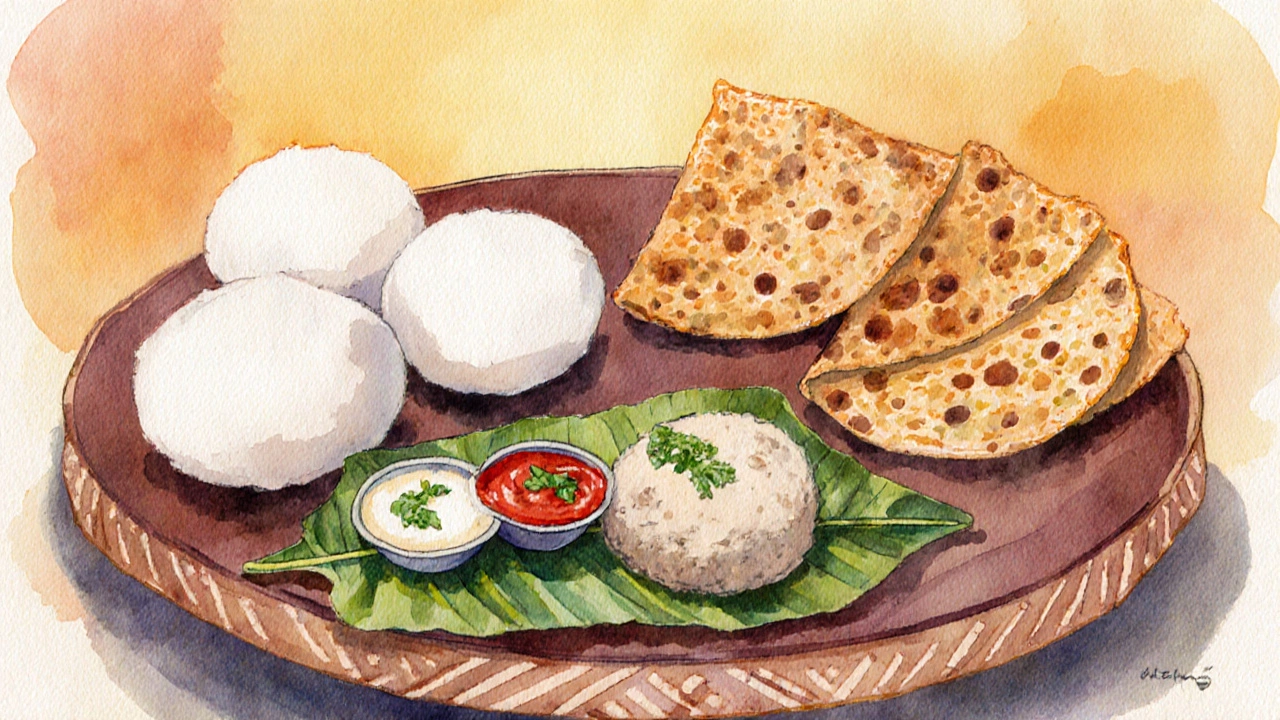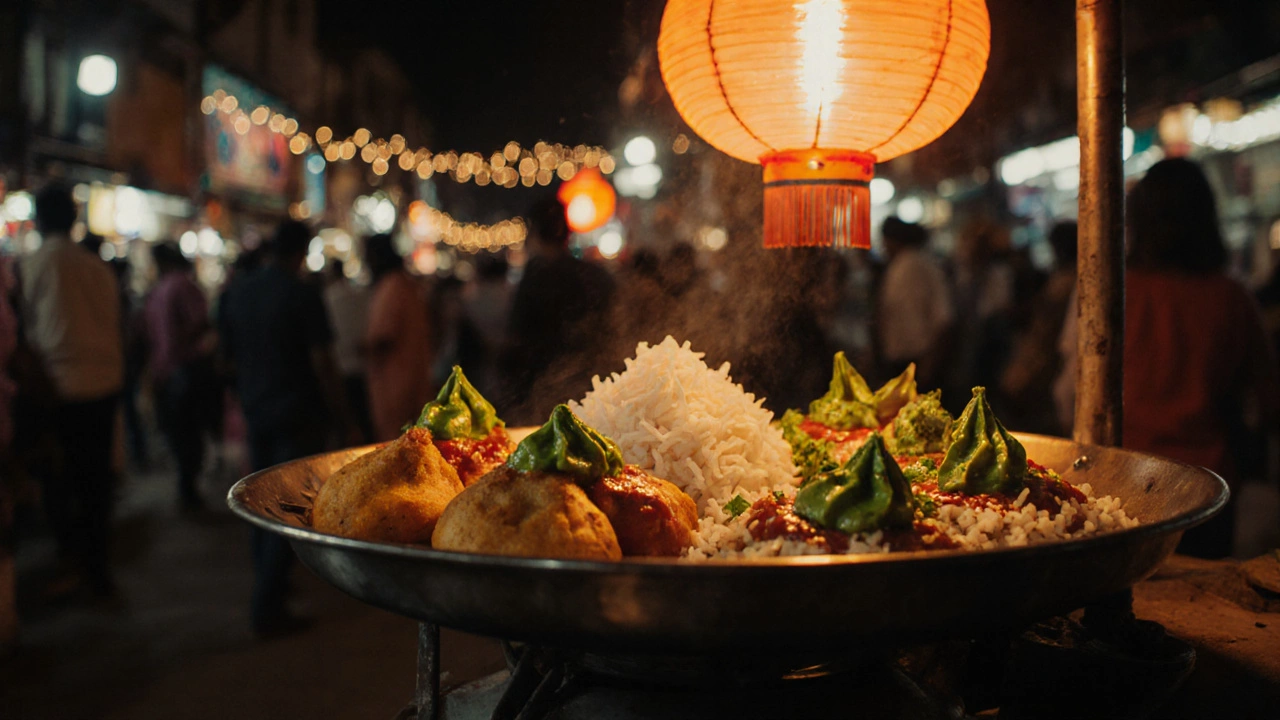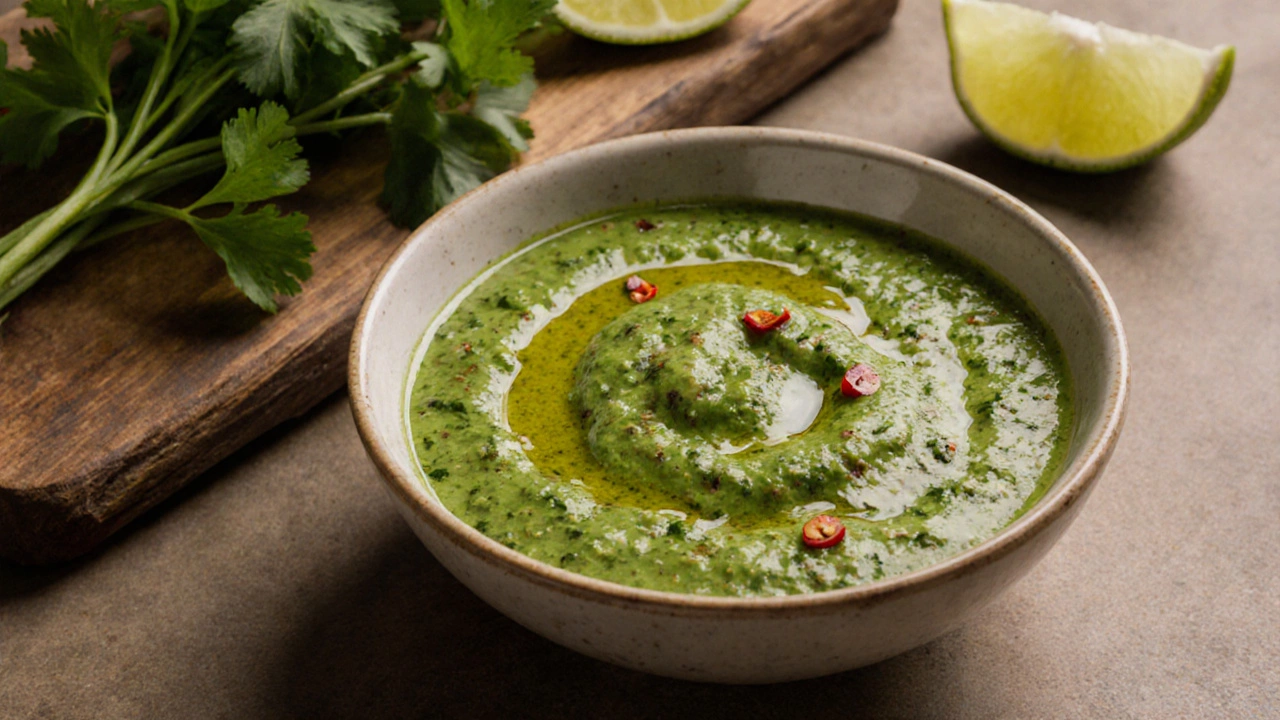6 Oct 2025
- 0 Comments
Indian Chutney Pairing Guide
Perfect Pairing Found!
Popular Chutney Types
Green Herb Chutney
Made with fresh herbs like mint and cilantro, perfect for fried snacks and spicy dishes.
Sweet Fruit Chutney
Made with mango or other fruits, complements savory meals with sweet contrast.
Tangy Chutney
Uses tamarind or other acidic ingredients to cut through rich and fried foods.
Key Takeaways
- Chutney is paired with everything from breads and rice to street‑food snacks.
- Regional variations dictate which chutney matches a dish.
- Fresh herb chutneys go well with fried snacks, while sweet fruit chutneys complement savory meals.
- Understanding pairings helps you recreate authentic Indian meals at home.
- Use the table below as a quick reference for common Indian chutney pairings.
When you hear chutney is a flavorful Indian condiment made from herbs, spices, fruits or vegetables, often blended into a smooth or chunky sauce, the first image is usually a vibrant green coriander‑mint mix or a tangy tamarind spread. But chutney isn’t a stand‑alone side; it’s a bridge that ties the main dish to the palate. Below we explore the most common foods Indians enjoy with chutney, why those pairings work, and how regional tastes shape the combos.
Flatbreads: The Classic Companion
Across North India, flatbreads are the daily staple, and they love a good dip. When you bite into a hot roti-a whole‑wheat unleavened bread-coated with a smear of coriander‑mint chutney, the heat of the bread releases the aromatics, while the chutney adds cool brightness.
In Punjab, buttery naan and paratha are often brushed with ghee and paired with a dollop of sweet mango chutney. The richness of the butter balances the fruit’s acidity, creating a layered flavor profile.
South Indian Staples: Idli, Dosa, and Vada
Down south, the breakfast trio of idli, dosa, and vada arrives with a trio of chutneys-coconut, tomato, and coriander‑mint. The soft, steamed idli benefits from the creamy coconut chutney, while the crispy dosa is perfect for the tangy tomato version. Vada’s deep‑fried crunch is softened by any of the three, but especially the spicier coriander‑mint.
These pairings are rooted in the humidity of the coastal climate; the chutneys add moisture and a cooling effect that balances the heat from chilies used in the batter.

Snacks and Street Food: Samosa, Pakora, and Bhel
Indian street food thrives on texture contrasts. Fried pockets like samosa-filled with spiced potatoes and peas-are traditionally served with tamarind chutney for sweet‑sour notes and cilantro chutney for herbaceous heat. The sweet tamarind cuts through the oil, while the cilantro adds freshness.
Similarly, onion or spinach pakora (vegetable fritters) pair well with green chutney made from mint, cilantro, and green chilies. The herbaceous bite lifts the heavy batter.
For a lighter snack like bhel-puffed rice mixed with veggies and spices-sweet mango chutney offers a fruity contrast that balances the tangy tamarind sauce already in the mix.
Rice Dishes: Biryani, Lemon Rice, and Simple Steamed Rice
Rice can be a neutral canvas, but when it’s the star, chutneys turn it into a flavor‑packed experience. In Hyderabad, a slice of biryani often gets a side of garlic‑raita and a small spoon of fresh coriander‑mint chutney. The chutney cuts through the richness of the meat and saffron.
South Indian lemon rice-cooked with turmeric, curry leaves, and peanuts-pairs nicely with coconut chutney, adding creaminess that balances the citrusy zing.
Even plain steamed rice, served at the end of a thali (meal plate), can be mixed with a spoonful of tomato chutney, giving a gentle acidity that cleanses the palate between courses.
Curries and Gravies: A Versatile Side
Many Indian households keep a small bowl of chutney on the table for every curry. For example, a thick lentil dal (daal) gets a bright boost when a dash of green chutney is stirred in just before serving. The fresh herbs lighten the earthy dal.
Spicy chicken or paneer tikka masala often comes with a side of sweet onion chutney. The subtle sweetness counters the heat and adds depth.
Quick Reference Table
| Food Item | Typical Chutney | Region/Notes |
|---|---|---|
| Roti / Chapati | Coriander‑mint | North India - fresh contrast |
| Naan / Paratha | Mango (sweet) | Punjab - butter & fruit balance |
| Idli / Dosa | Coconut, Tomato, Coriander‑mint | South India - breakfast trio |
| Vada | Coriander‑mint | South India - cuts fried heaviness |
| Samosa | Tamarind & Coriander‑mint | All over India - sweet‑sour & heat |
| Pakora | Mint‑coriander | North & West - herb lift |
| Biryani | Coriander‑mint (optional garlic‑raita) | Hyderabad / Delhi - cuts richness |
| Lemon Rice | Coconut | South India - cream meets citrus |
| Dal (lentil soup) | Green herb (coriander‑mint) | All regions - brightens earthiness |

Why Pairings Matter: Flavor Science in a Bowl
Chutneys are built on three pillars: acidity, sweetness, and heat. When you match a dish, you’re balancing those pillars against the base food’s own profile. Fried foods need acidity to cut grease; bland breads need fresh herbs to wake up the palate; aromatic rice dishes benefit from a touch of sweetness to offset spices.
Regional spice palettes also influence pairings. Coastal Kerala favors coconut‑based chutney because coconut is abundant, while Gujarat, a dry region, leans on tangy, sweet mango chutney to add moisture.
How to Choose the Right Chutney at Home
- Identify the dominant taste of your main dish (rich, spicy, sour, or bland).
- Select a chutney that offers the opposite or complementary note.
- Consider texture: smooth chutneys for soft breads, chunky for fried snacks.
- Adjust heat level with chilies or omit them for a milder side.
- Serve at room temperature; chilled chutney can dull flavors in hot dishes.
Following these steps lets you mix and match confidently, whether you’re cooking a full thali or just a quick snack.
Frequently Asked Questions
Can I use the same chutney for every Indian dish?
You can, but the experience changes. A coriander‑mint chutney works well with many foods, yet a sweet mango chutney might overwhelm a delicate idli. Matching flavors enhances enjoyment.
What’s the difference between green and red chutney?
Green chutney gets its color from fresh herbs like cilantro and mint, offering cool heat. Red chutney often uses dried red chilies, tomato or tamarind, giving a deeper spice and tang.
Are chutneys gluten‑free?
Yes, traditional chutneys are made from fruits, vegetables, herbs, nuts, and spices-none contain gluten. Just watch for added flour in specialty recipes.
How long can homemade chutney be stored?
Refrigerated in an airtight jar, most chutneys last 5‑7 days. Adding lemon juice or vinegar extends shelf life; for longer storage, freeze in ice‑cube trays.
Which chutney pairs best with cheese dishes?
A sweet onion or mango chutney balances the salty bite of paneer or even Western cheeses like cheddar, creating a fusion snack.
Next Steps for Home Cooks
- Pick a base recipe-roti, idli, or samosa-and try at least two different chutneys from the table.
- Note which pairing makes the dish feel lighter or richer; adjust future meals accordingly.
- Experiment with regional chutneys you haven’t tried; the Indian pantry is vast, and each new flavor expands your culinary toolkit.
With these tips, you’ll never wonder “what do Indians eat chutney with?” again-because you’ll have a ready list of perfect partners for every bite.
